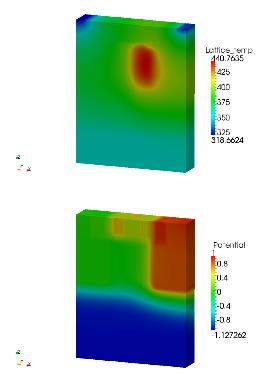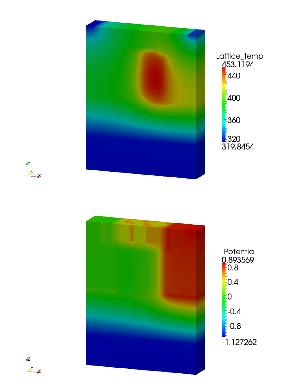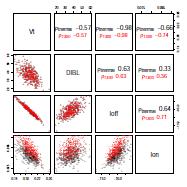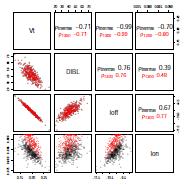Simulation of Self Heating of FinFETs


The impact of self-heating on the statistical variability has been studied for the first time for bulk and SOI FinFETs designed to meet the requirements of the 14/16 nm technology node. The simulations are carried by the GSS atomistic simulator GARAND using an enhanced electrothermal model that takes into account the effect of the fin geometry on the thermal conductivity.
In the simulations we have compared the statistical variability at uniform room temperature and at the maximum temperature obtained in the electrothermal simulations with the variability obtained from full-scale electrothermal
simulations, taking into account the external thermal resistances. The combined effects of line edge roughness and metal gate granularity are taken into account. The distributions and the correlations between key figures of merit including the threshold voltage, on-current,subthreshold slope and leakage current are analyzed.
For both bulk and SOI FinFET examples, ensembles of 400 microscopically different devices were simulated, including the combined sources of variability gate edge roughness (GER), fin edge roughness (FER), and metal gate granularity (MGG). Fig. 1 and Fig. 2 show a significant hot spot generated near the drain, and comparing to the bulk FinFET, the self-heating effect in the SOI FinFET is more severe due to the thermal isolation of BOX.
The reduced thermal conductivity due to the fin geometry has a dramatic effect on the self-heating, raising the peak temperature from 341 K to 433 K in the case of bulk FinFETs and from 351 K to 457 K in the case of SOI FinFETs. The self-heating has a strong impact in reducing the on-current variability but does not significantly affect the threshold voltage, subthreshold slope and off current variability. This in turn affects the correlation between the on-current distribution and the distributions of the rest of the figures of merit (Fig. 3 and Fig. 4). This is due to a negative feedback between the current variability and the selfheating. In contrast the uniform increase of the temperature reduces the I_on variability, marginally increases the V_th variability, increases the SS variability but reduces the I_off variability due to the increase of the subthreshold slope.
 Circuit Stability Under Process Variability and Electro-Thermal-Mechanical Coupling
Circuit Stability Under Process Variability and Electro-Thermal-Mechanical Coupling
